
A cult film or cult movie, also commonly referred to as a cult classic, is a film that has acquired a cult following. Cult films are known for their dedicated, passionate fanbase which forms an elaborate subculture, members of which engage in repeated viewings, dialogue-quoting, and audience participation. Inclusive definitions allow for major studio productions, especially box-office bombs, while exclusive definitions focus more on obscure, transgressive films shunned by the mainstream. The difficulty in defining the term and subjectivity of what qualifies as a cult film mirror classificatory disputes about art. The term cult film itself was first used in the 1970s to describe the culture that surrounded underground films and midnight movies, though cult was in common use in film analysis for decades prior to that.
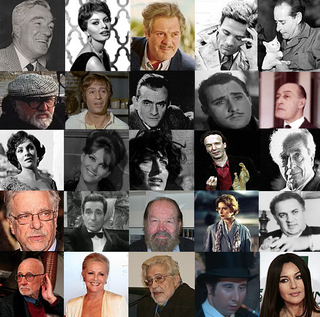
The cinema of Italy comprises the films made within Italy or by Italian directors. Italy is one of the birthplaces of art cinema and the stylistic aspect of film has been one of the most important factors in the history of Italian film. As of 2018, Italian films have won 14 Academy Awards for Best Foreign Language Film as well as 12 Palmes d'Or, one Academy Award for Best Picture and many Golden Lions and Golden Bears.

Horror is a film genre that seeks to elicit fear or disgust in its audience for entertainment purposes.
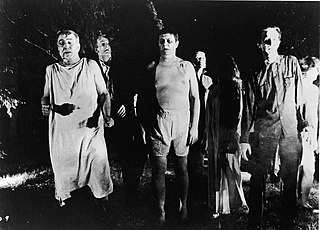
A B movie, or B film, is a type of low-budget commercial motion picture. Originally, during the Golden Age of Hollywood, this term specifically referred to films meant to be shown as the lesser-known second half of a double feature, somewhat similar to B-sides in the world of recorded music. However, the production of such films as "second features" in the United States largely declined by the end of the 1950s. This shift was due to the rise of commercial television, which prompted film studio B movie production departments to transition into television film production divisions. These divisions continued to create content similar to B movies, albeit in the form of low-budget films and series.

The cinema of Hong Kong is one of the three major threads in the history of Chinese language cinema, alongside the cinema of China and the cinema of Taiwan. As a former British colony, Hong Kong had a greater degree of political and economic freedom than mainland China and Taiwan, and developed into a filmmaking hub for the Chinese-speaking world.

Mexican cinema dates to the late nineteenth century during the rule of President Porfirio Díaz. Seeing a demonstration of short films in 1896, Díaz immediately saw the importance of documenting his presidency in order to present an ideal image of it. With the outbreak of the Mexican Revolution in 1910, Mexican and foreign makers of silent films seized the opportunity to document its leaders and events. From 1915 onward, Mexican cinema focused on narrative film.

Mario Bava was an Italian filmmaker who worked variously as a director, cinematographer, special effects artist and screenwriter, frequently referred to as the "Master of Italian Horror" and the "Master of the Macabre". His low-budget genre films, known for their distinctive visual flair and stylish technical ingenuity, feature recurring themes and imagery concerning the conflict between illusion and reality, as well as the destructive capacity of human nature. He was a pioneer of Italian genre cinema, and is regarded as one of the most influential auteurs of the horror film genre.
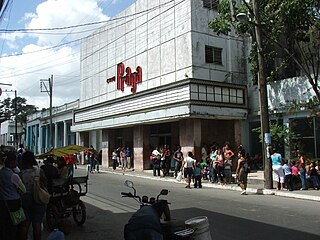
Cinema arrived in Cuba at the beginning of the 20th century. Before the Cuban Revolution of 1959, about 80 full-length films were produced in Cuba. Most of these films were melodramas. Following the revolution, Cuba entered what is considered the "Golden age" of Cuban cinema.
Third Cinema is a Latin American film movement that started in the 1960s–70s which decries neocolonialism, the capitalist system, and the Hollywood model of cinema as mere entertainment to make money. The term was coined in the manifesto Hacia un tercer cine, written in the late 1960s by Argentine filmmakers Fernando Solanas and Octavio Getino, members of the Grupo Cine Liberación and published in 1969 in the journal Tricontinental by the OSPAAAL.
Paracinema is an academic term to refer to a wide variety of film genres out of the mainstream, bearing the same relationship to 'legitimate' film as paraliterature like comic books and pulp fiction bears to literature.

The Cinema of the Philippines began with the introduction of the first moving pictures to the country on August 31, 1897, at the Salón de Pertierra in Manila. The following year, local scenes were shot on film for the first time by a Spaniard, Antonio Ramos, using the Lumiere Cinematograph. While most early filmmakers and producers in the country were mostly wealthy enterprising foreigners and expatriates, on September 12, 1919, Dalagang Bukid , a movie based on a popular musical play, was the first movie made and shown by Filipino filmmaker José Nepomuceno. Dubbed as the "Father of Philippine Cinema," his work marked the start of cinema as an art form in the Philippines.
The Golden Age of Mexican Cinema is a boom period in the history of Mexican cinema, which began in 1936 with the premiere of the film Allá en el Rancho Grande, and culminated in 1956.
The National Screen Service (NSS) was a company that controlled the distribution of theatrical advertising materials in the United States from approximately 1940 through the 1980s. It was located in Englewood, New Jersey.
German underground horror is a subgenre of the horror film, which has achieved cult popularity since first appearing in the mid-1980s. Horror films produced by the German underground scene are usually trademarked by their intensity, taking on topics that are culturally taboo such as rape, necrophilia, and extreme violence.
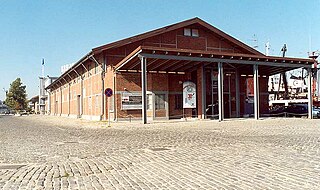
The Cinema Museum of Thessaloniki is a museum in Thessaloniki, Central Macedonia, Greece. It was founded in 1995 following a decision by the Organization for Thessaloniki, Cultural Capital of Europe 1997. Today it is part of the Thessaloniki Film Festival with its own management committee. It is housed in Warehouse 1, a listed building on quay 1 in the harbour, at the end of the old sea front near Aristotelous Square.

The Asian American International Film Festival (AAIFF) is the first and longest-running film festival to showcase the works of emerging and experienced Asian and Asian American filmmakers and media artists in the US.

Haitian cinema includes the films and filmmakers of Haiti. The Haitian diaspora is active in the industry. Oppressive dictators and economic struggles have limited production.
Million Film (ミリオンフィルム) was one of the early independent studios which produced pink films. Along with OP Eiga, Shintōhō Eiga, Kantō and Kōji Wakamatsu's production studio, Million Film was one of the most influential on the genre during its first decade. Many of the most prominent directors and performers in the pink film genre worked for Million Film.
The Fantastic Film Festival of the University of Málaga, also known as Fancine Málaga, has been celebrated annually since 1990 in the city of Málaga, Spain, and it focuses on the fantastic, science-fiction and horror movie genres. It is celebrated in the month of November.
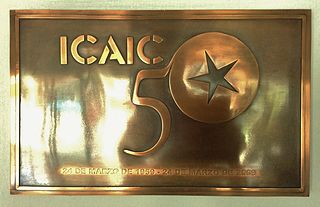
The Instituto Cubano del Arte e Industria Cinematográficos was established by the Cuban government in March 1959 after the Cuban Revolution. Its prominent members are Sara Gómez, Tomás Gutiérrez Alea, Julio García Espinosa, Alfredo Guevara and Santiago Álvarez.
















